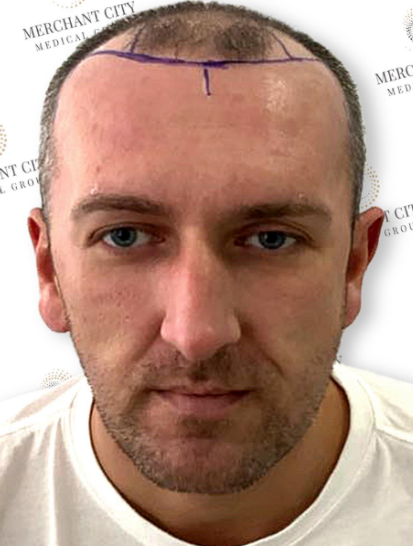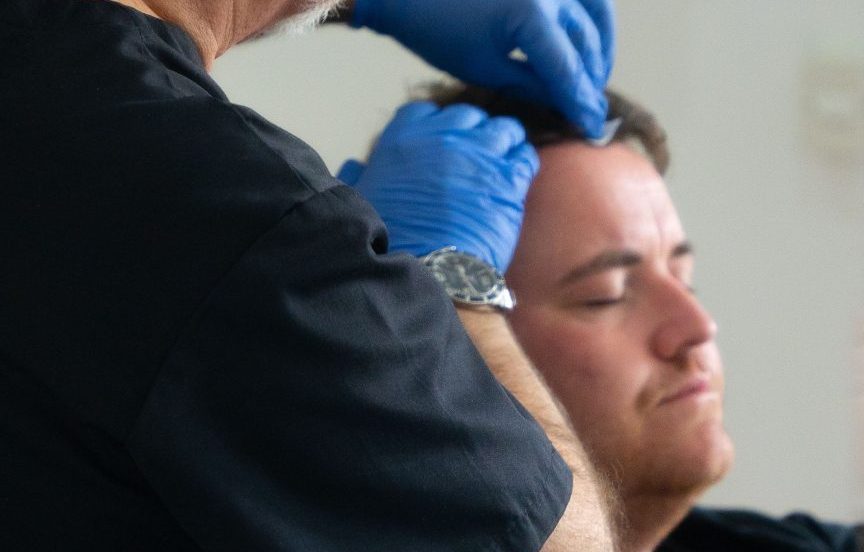
Can One Go Bald After a Hair Transplant?
Can One Go Bald After a Hair Transplant?
Can a hair transplant result in baldness? Learn about the possibility of going bald after a hair transplant and understand the factors influencing the procedure’s success.

Can One Go Bald After a Hair Transplant?
A common remedy for people suffering from hair loss is hair transplant surgery. The hair transplant surgery process can ignite a spark of hope in many, offering the potential for a brighter future.
A pledge to have a denser head of hair and to regain confidence. One common concern among those contemplating this treatment is, “Will I still become bald after a hair transplant?”
To fully comprehend the answer to this question, we must examine the specifics of hair transplant surgery, the causes of post-transplant hair loss, and the preventative measures that can be implemented.
What is Hair Transplant Surgery?
In hair transplant surgery, hair follicles are extracted from the “donor site,” typically the head’s back or sides. This is where hair is more resistant to balding and is then implanted into the “recipient site,” which is the area where balding is occurring. Let’s briefly check out the Follicular Unit Extraction (FUE) hair transplant technique.
- Follicular Unit Extraction (FUE) Hair Transplant
FUE transplants individual hair follicles directly into the balding area after removing them from the donor location through microscopic incisions. This procedure is less invasive, leaves fewer scars, and doesn’t require stitches; therefore, recovery time is comparatively fast. The transplanted hair follicles are anticipated to continue their growth cycle in the new area, resulting in new hair growth regardless of the procedure employed. While transient hair shedding is common a few weeks following treatment, your hair will return to its natural state, and new hair will grow in the transplanted areas. Because of the nature of the removed follicles, it is unlikely that you would resume a trend of baldness following your surgery.

Are There Any Risks Associated With Getting a Hair Transplant Too Early?
Men contemplating hair transplantation should be aware that doing surgery too soon could result in disappointing outcomes later on because MPB continues to worsen even after the procedure. Furthermore, the results could appear unnatural if you decide to have more than one procedure over time. This is due to variations in the texture of native and transplanted hairs or simply because the procedure was performed poorly. To know exactly what kind of outcome they will get after a procedure, it is recommended practice for patients who are thinking about getting a transplant to wait until their MPB has stabilised. Understanding the underlying reason for male pattern baldness is crucial before pursuing any therapy.
Is It Unusual to Lose Hair After Hair Transplant?
Yes. It’s normal to experience temporary hair loss following a hair transplant. When you think about it, this is a brief—and ironic side effect of hair restoration therapy. According to the American Academy of Dermatology, transplanted hair commonly falls out two to eight weeks after surgery due to shock. By the third month following a transplant, hair typically seems thinner. As the hair in your transplant grows, you’ll find it thicker and healthier.

Is There a Possibility of Pattern Balding After a Hair Transplant?

Following hair transplant surgery, patients often never again have pattern baldness.
This results from the harvested hair follicles’ nature, which makes it unlikely for them to fall out because they are plucked from the sides and rear of the head. The transplanted hair may, nevertheless, eventually thin. Follicles have a lifespan, and certain patients may develop patchiness in certain areas of the scalp or thinning of their transplanted hair. This could be caused by the hair restoration surgeon’s or surgical error in choosing the best donor site for hair replacements.
More hair transplant surgery can be required to fill in the thin areas of the scalp.
Practices that Help You Avoid Hair Loss After a Hair Surgery
How should you avoid going bald and losing your hair transplant investment?Here are the hacks that will help you through.
Patients who underwent surgery too early may occasionally have thinning hair after their transplant.
Collecting hair from a section of the scalp ready to fall out is possible.
Before deciding to have surgery, patients must be aware of their balding and the amount their hairline will recede.
In connection with the preceding discussion, baldness following a hair transplant may result from a surgeon who lacks experience or training.
Reputable surgeons consider your age, medical history, and other details to decide when surgery is best for you and what approach will work best.
Conduct thorough research and consider Merchant City Medical Group surgeons in the UK and Europe.
When it comes time to make your final selection, be sure to choose a surgeon whose training and expertise you can trus
After your hair transplant, you’ll want to care extra for your scalp and the transplanted follicles.
Ensure you adhere to all post-operative instructions and promptly report any concerns to us if something goes wrong.
The Bottom Line
Hair loss is possible after a hair transplant, but it can be considerably reduced by scheduling the procedure at the right time and selecting a reputable hair transplant facility. Follow the recommended aftercare guidelines to get the most out of your hair transplant and have a thicker, fuller head of hair. At Merchant City Medical Group, we have a slot for you to book a free consultation and a callback so that you can get additional information on hair transplants of your choice. We are available to answer your questions and support you throughout hair restoration. Talk to us today.
Excellence Record
- 30+ Years of combined experience
- 10 + Experts
- 1000 + Satisfied Patients





